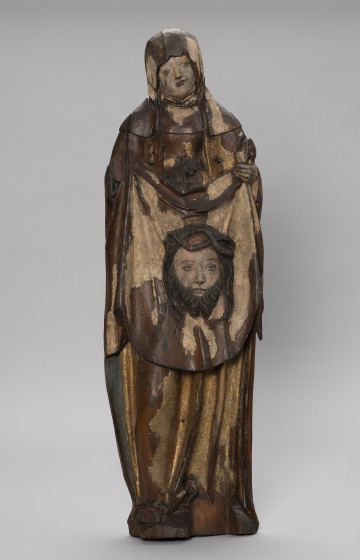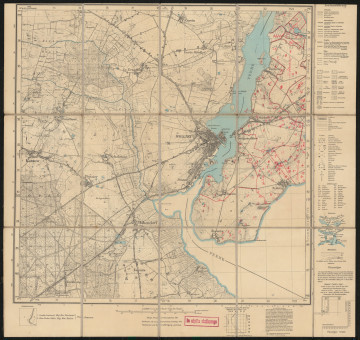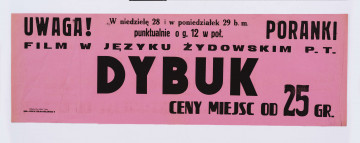Platter
1912 — 1945
Museum of the history of Polish Jews
Herring serving platters set received by Janina Orzeszko as a token of gratitude for safekeeping the belongings of the Jewish family Rubinek during the German occupation. Janina and Tadeusz Orzeszko lived in Radom. She owned and ran a dental surgery in a family tenement house, he worked as a surgeon in a local hospital. A Jew whose family name was Rubinek (his first name is unknown today) worked in Janina’s surgery as a dental technician. During the war, the Rubinek family lived in the Radom ghetto at Wałowa St. Shortly before the outbreak of the Warsaw Uprising, Rubinek decided to go to Warsaw, hoping that the anonymity of the big city (in Radom, he was a well-known person) would give him a chance to survive. Before leaving, he entrusted Janina with some of his belongings for safekeeping. He probably perished during the uprising.
Rubinek’s wife hid with a family in the countryside. She survived and left for Israel after the war. In the 1950s, she visited the Orzeszko family in Poland and then she picked up the things that her husband had entrusted to his employer. She left the herring platter set to Janina as a token of gratitude for safekeeping the items that belonged to her and her deceased husband. During the war, many people – Jews and members of the resistance movement – were hiding at the Orzeszkos’ place. Janina Orzeszko collaborated with “Żegota” (https://sztetl.org.pl/en/glossary/zegota). Tadeusz was active in a secret Home Army unit in the hospital in Radom. As a result of being exposed, he was arrested and imprisoned in Auschwitz. There, he worked in the camp hospital and continued to help those in need.
The set consists of seven decorative porcelain dishes. One of them is significantly larger and it was used to serve the whole portion of a dish, while the smaller ones were intended for eating the servings. All the platters are decorated with genre scenes rendered with colour underglaze paints. Each scene is different. Looking more closely at the platters, we can see that the genre scenes have been applied using a stencil. The details of the representations overlap in places, and their outlines are blurred. The bottom of each platter bears a signature. It consists of: the monogram “CK” and the inscription “Karlsbad Czechoslovakia” with a crown above it. The dishes were donated to the Museum by Danuta Orzeszko-Bałuk (b. 1937), daughter of Janina and Tadeusz Orzeszko.
Marta Fraczkiewicz
Znaleziono 7 obiektów

circa 1520 — 1530
National Museum in Szczecin

1930 — 1939
National Museum in Szczecin

1937 — 1938
National Museum in Lublin
DISCOVER this TOPIC
Castle Museum in Łańcut
DISCOVER this PATH
Educational path